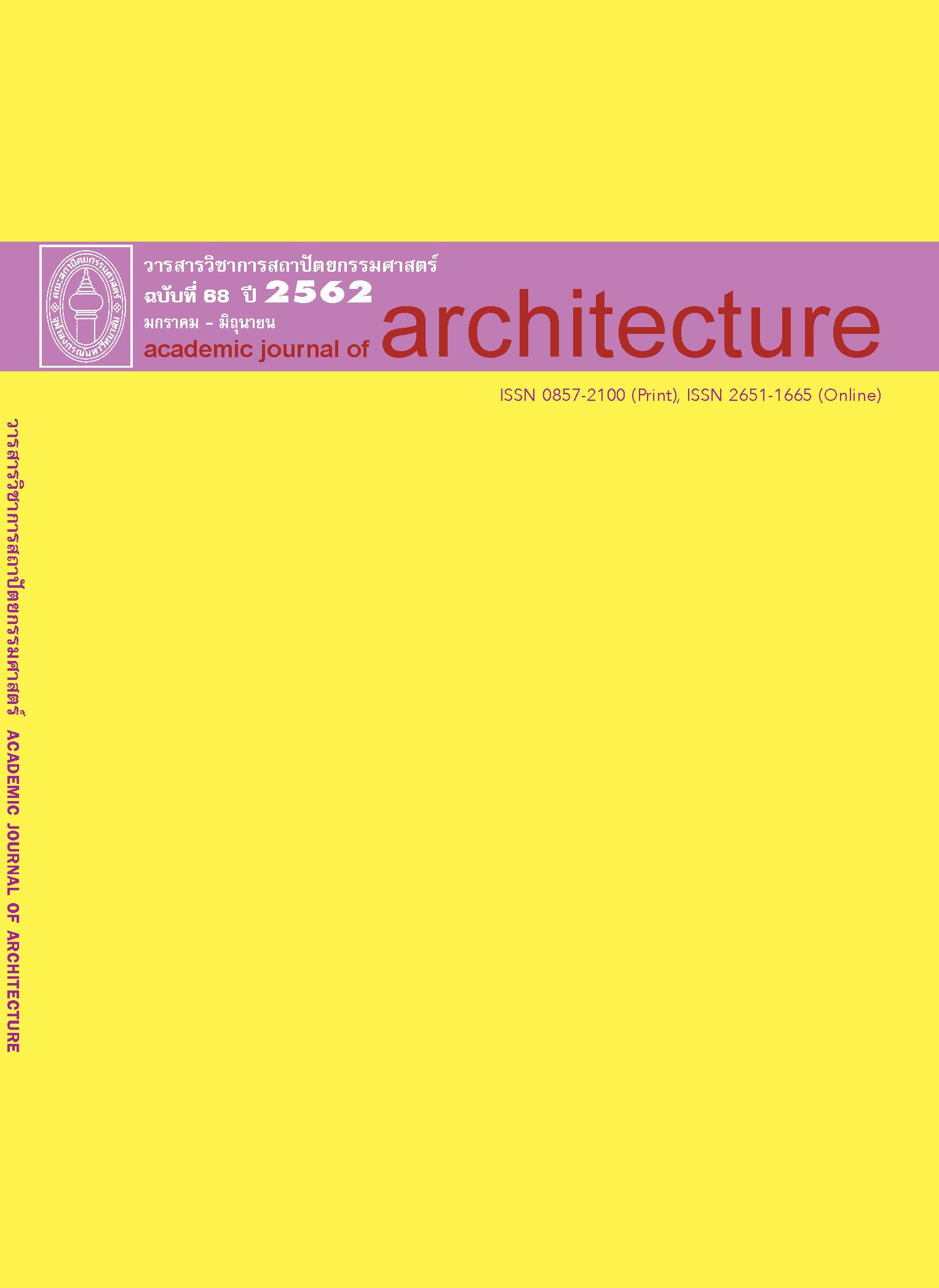Improving Multiple-Beds Wards Ventilation Using a Hybrid Technique for Airborne Infection Control
Main Article Content
Abstract
The objective of this research was to make a guideline for improving the ventilation of existing multiple-bed wards for infection control. This research used an air flow simulated experiment through a computational fluid dynamic program. The study looked at 3 existing buildings located in the north, south, and west because of poor ventilation. Eight natural wind directions flow through the building (wind speed 2 m/s). There are three types of building ventilation design: 1) Non fan-assisted ventilation, 2) fixed direction fan-assisted ventilation, 3) Wind direction related fan-assisted ventilation. The results showed that, the average air change per hour increased by 4.69 ACH for fixed direction fan-assisted ventilation. However, average air change per hour increased by 6.41 ACH for wind direction related fan-assisted ventilation. Mechanical devices flow direction should be designed in relation to natural wind direction to reduce the risk of infections.
Article Details
References
กิตติคุณ ยกทรัพย์. “การเพิ่มประสิทธิภาพการระบาย อากาศในหอผู้ป่วยรวมของโรงพยาบาล.” วิทยานิพนธ์ปริญญามหาบัณฑิต สาขาวิชาสถาปัตยกรรม คณะสถาปัตยกรรมศาสตร์และการผังเมือง มหาวิทยาลัยธรรมศาสตร์, 2558.
ณิชาภัทร ดิเรกวัฒนชัย. “ประสิทธิภาพการระบายอากาศในคลินิกวัณโรค กรณีศึกษาศูนย์บริการสาธารณสุขในกรุงเทพมหานคร.” วิทยานิพนธ์ปริญญามหาบัณฑิต ภาควิชาสถาปัตยกรรมศาสตร์ คณะสถาปัตยกรรม-ศาสตร์ จุฬาลงกรณ์มหาวิยาลัย, 2559.
ภารดี ช่วยบำรุง. เทคโนโลยีในการจำกัดเชื้อจุลินทรีย์ในอากาศในโรงพยาบาล. พิมพ์ครั้งที่ 1. กรุงเทพฯ: สำนักพิมพ์แห่งจุฬาลงกรณ์มหาวิทยาลัย, 2557.
สถาบันบำราศนราดูร. สำนักวัณโรค. แนวทางการป้องกันและควบคุมการแพร่กระจายเชื้อวัณโรค. พิมพ์ครั้งที่ 1. กรุงเทพฯ: สำนักพิมพ์อักษรกราฟฟิคแอนด์ดีไซน์, 2559.
อะเคื้อ อุณหเลขกะ. “End Tb โดยการยุติการแพร่กระจายวัณโรคในโรงพยาบาล.” สืบค้น 20 ธันวาคม 2561. https://www.youtube.com/watch?v= av0o9OOgMSI.
อุษณ จันทรทรัพย์. “การประเมินผลการระบายอากาศด้วยวิธีธรรมชาติในหอผู้ป่วยของโรงพยาบาล.” วิทยานิพนธ์ปริญญามหาบัณฑิต ภาควิชาสถาปัตยกรรม-ศาสตร์ คณะสถาปัตยกรรมศาสตร์ จุฬาลงกรณ์มหาวิทยาลัย, 2553.
American Society of Heating Refrigerating and Air-Conditioning Engineers (ASHRAE). ASHRAE Standard 170-2017: Ventilation of Health Care Facilities. Inch-pound ed. Atlanta, Ga.: ASHRAE, 2017.
Awbi, Hazim. Ventilation System Design and Performance. New York: Taylor & Francis, 2008.
Chanawat Nitatwichit, Yottana Khunatorn and Nakorn Tippayawong. “Investigation and Characterization of Cross Ventilation Flows through Openings in a School Classroom.” Journal of the Chinese Institute of Engineers 31, 4 (2008): 587-603.
Inkarojrit, Vorapat. “Natural Ventilation in Thai Hospitals: A Field Study.” Paper presented at 31st AIVC Conference Low Energy and Sustainable Ventilation Technologies for Green Buildings, Seoul, October 26, 2010.
Jiamjarasrangsi, W, Bualert, S, Chongthaleong, A, Chindamporn, A, Udomsantisuk, N and Euasamarnjit, W. “Inadequate Ventilation for Nosocomial Tuberculosis Prevention in Public Hospitals in Central Thailand.” The International Journal of Tuberculosis and Lung Disease : the Official journal of the International Union against Tuberculosis and Lung Disease 13, 4 (2009): 454-59.
World Health Organization. Natural Ventilation for Infection Control in Health-Care Settings. Geneva: WHO, 2009.

